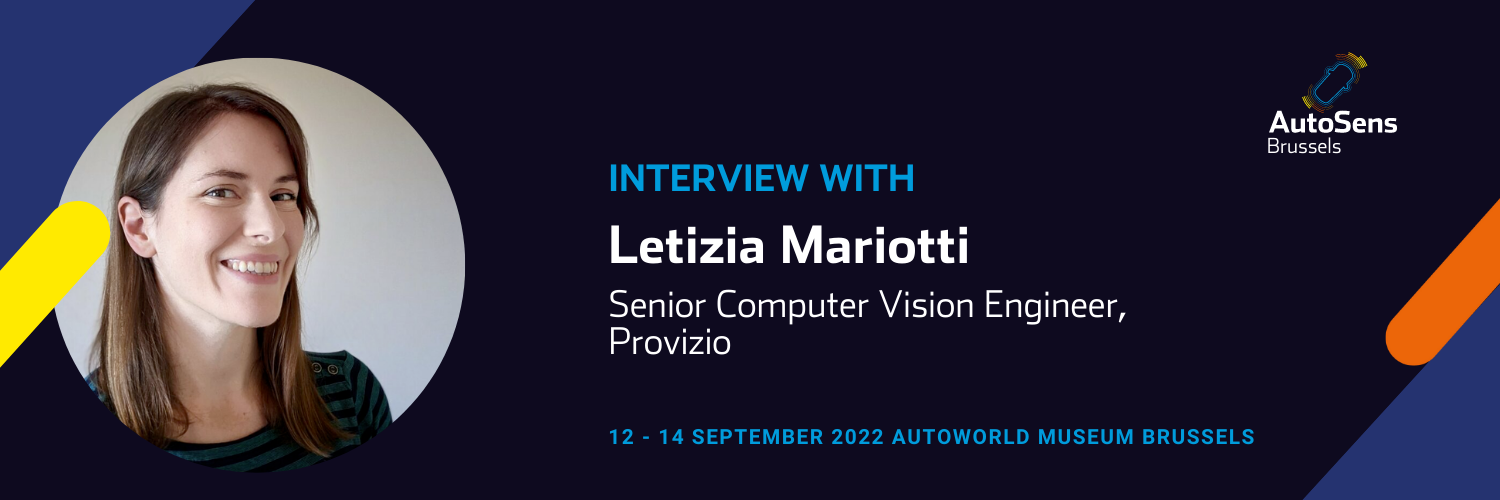- Hayley Sarson
We caught up with Letizia Mariotti, Senior Computer Vision Engineer at Provizio, who joined us on stage on 14th September 2022 at AutoSens Brussels, with a session on ‘Active Safety as the path to Autonomy’. Continue reading to learn more.
-
You spoke on “Active Safety as the path to Autonomy: high resolution radar and vision for 5D imaging” at the conference – can you give us further details about your talk?
Preventable human error has a role in more than 90% of road accidents and the numbers have not changed for more than 20 years. Unless we initiate change, this worldwide problem will continue unabated.
There has been a lot of focus in the last decade on achieving fully autonomous driving, but the main problem with this approach is that it immediately removes the driver from the equation, which caused drivers to see autonomous driving technology with mistrust.
We believe that the focus should be shifted back to understanding the underlying causes of car crashes and develop technology to work alongside, and not in place, of human drivers.
Understanding what sensors and processing capabilities are needed to predict and prevent road accidents is crucial to our mission.
My presentation was about how we started Provizio to solve this problem and the technology that we developed to achieve this goal.
-
You mentioned that “the focus should be shifted back to understanding the underlying causes of car crashes”. What sensors and processing capabilities do we need to be able to predict and prevent them successfully?
Systems currently on the market see in low resolution to distances of about 100m, but the safe stopping distance for a car at highway speed is around 220m, even longer if we consider larger and more dangerous vehicles such as trucks.
We need sensors that are able to see far beyond what is available, which is why we designed and built the world’s first fully software defined 6K 4D radar, with sub 1° azimuth resolution and 600m+ range. Low level fusion with HD vision is also an important element to augment the capabilities of the radar, but the radar is the core element of our platform since it can perform in all weather conditions, including adverse ones such as heavy snow or rain.
Regarding processing capabilities, having AI on the edge, i.e. processing on the sensor itself, is crucial. Active safety needs fast reaction times and performing time-critical operations on the edge can reduce the processing time by an order of magnitude to be of the order of milliseconds, which is why we have integrated GPU and VPU on our radars.
The last and essential feature of a platform that aims to prevent all car crashes is low cost and scalability, since it has to be accessible to everyone if we really want to make a difference and cut down on road accidents, which is our mission.
-
What were you most looking forward to when you joined us at AutoSens in Brussels in September 2022?
It was an honour to be part of this event which showcased cutting edge technology and advancements in the automotive sector. I was excited to be speaking alongside other innovators in the field, and it was a great occasion to exchange ideas!







